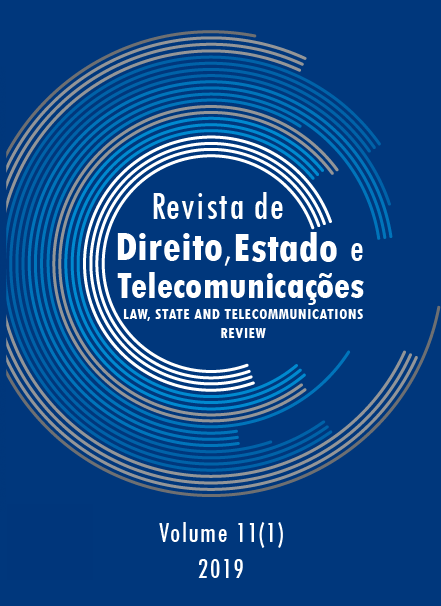Multilayer, locality aware, telecommunication network deployment algorithm
DOI:
https://doi.org/10.26512/lstr.v11i1.24854Palavras-chave:
Multilayer. Locality aware. Telecommunication network deployment algorithm.Resumo
Purpose ”“ In this paper we propose an iterative approach for the deployment of rural telecommunication networks.
Methodology/approach/design ”“ This approach relies heavily on the concept of locality, prioritizing small ‘cells’ with a considerable population density, and exploits the natural nesting of the distribution of rural communities, focusing in communities which are populous enough to justify the investment required to provide them with connectivity, and whose sheer size promotes the formation of ‘satellite’ communities that could be benefited from the initial investment at a marginal expense. For this approach, the concept of ‘cells’ is paramount, which are constructed iteratively based on the contour of a Voronoi tessellation centered on the community of interest. Once the focal community has been ‘connected’ with network of the previous layer, the process is repeated with less populous communities at each stage until a coverage threshold has been reached. One of the main contributions of this methodology is that it makes every calculation based on ‘street distance’ instead of Euclidean, giving a more realistic approximate of the length of the network and hence the amount of the investment. To test our results, we ran our experiments on two segregated communities in one of the most complicated terrains, due to the mountain chains, in the state of Chiapas, Mexico.
Findings ”“ The results suggest that the use of ‘street distance’ and a local approach leads to the deployment of a remarkably different network than the standard methodology would imply.
Practical implications ”“ The results of this paper might lead to a significant reduction in the costs associated with these kinds of projects and therefore make the democratization of connectivity a reality. In order to make our results reproducible, we make all our code open and publicly available on GitHub.
Downloads
Referências
ALBAREDA-SAMBOLA, Maria; FERNÁNDEZ, Elena; RESENSE, Mauricio GC; RUIZ, Efrain. A biased random-key genetic algorithm for the capacitated minimum spanning tree problem. Computers & Operations Research, v. 57, p. 95-108, 2015.
ÁVILA, A.; KUHLMANN F.; SALCEDO, A. Searching for economic value in Mexican rural communities. Proceedings of the 9th Communication Policy Research (CPR) LATAM Conference, p. 169 -177, 2015.
BAUER, Johannes M. The Internet and income inequality: Socio-economic challenges in a hyperconnected society. Telecommunications Policy, 2017.
FRANSES, P.H. Fitting a Gompertz Curve. The Journal of the Operational Research Society, v. 45, n. 1, p. 109-113, 2014.
FRÄNTI, Pasi; MIAO, Duoqian; MIKKO, Malinen; ZHONG, Caiming. A fast minimum spanning tree algorithm based on K-means. Information Sciences, v. 295, p, 1-17, 2015.
INEGI. Total population by locality size and state 2000, 2005, 2010. INEGI.
IOANNOU, G; KRITIKOS, M. A greedy heuristic for the capacitated minimum spanning tree problem. Journal of the Operational Research Society, v. 68, n. 10, p. 1223-123, 2017.
MORA, M.; ROMAN L.; SALCEDO, A. Local layered algorithmic model for topological design of rural telecommunications networks. International Conference on OR for Development (ICORD), Mexico City, 2016.
OPEN SIGNAL WEBPAGE, 3G and 4G Coverage Maps.
ORENDAIN, J. Diagnóstico y prospectivas del sector de telecomunicaciones en México, en un entorno de convergencia. 2007. Thesis ”“ Instituto Tecnológico Autónomo de México, Mexico City, 2007.
PRYTZ, Mikael. On optimization in design of telecommunications networks with multicast and unicast traffic. 2002. 36f. Tese de Doutorado ”“ Royal Institute of Technology, Estocolmo, 2002.
ROLLER, Lars-Hendrik; WAVERMAN, Leonard. Telecommunications infrastructure and economic development: A simultaneous approach. American Economic Review, v. 91, n. 4, p. 909-923, 2001.
Downloads
Publicado
Como Citar
Edição
Secção
Licença
By submitting this paper to the Law, State and Telecommunications Review,
I hereby declare that I agree to the terms of the Creative Commons Attribution 4.0 International (CC BY 4.0).


